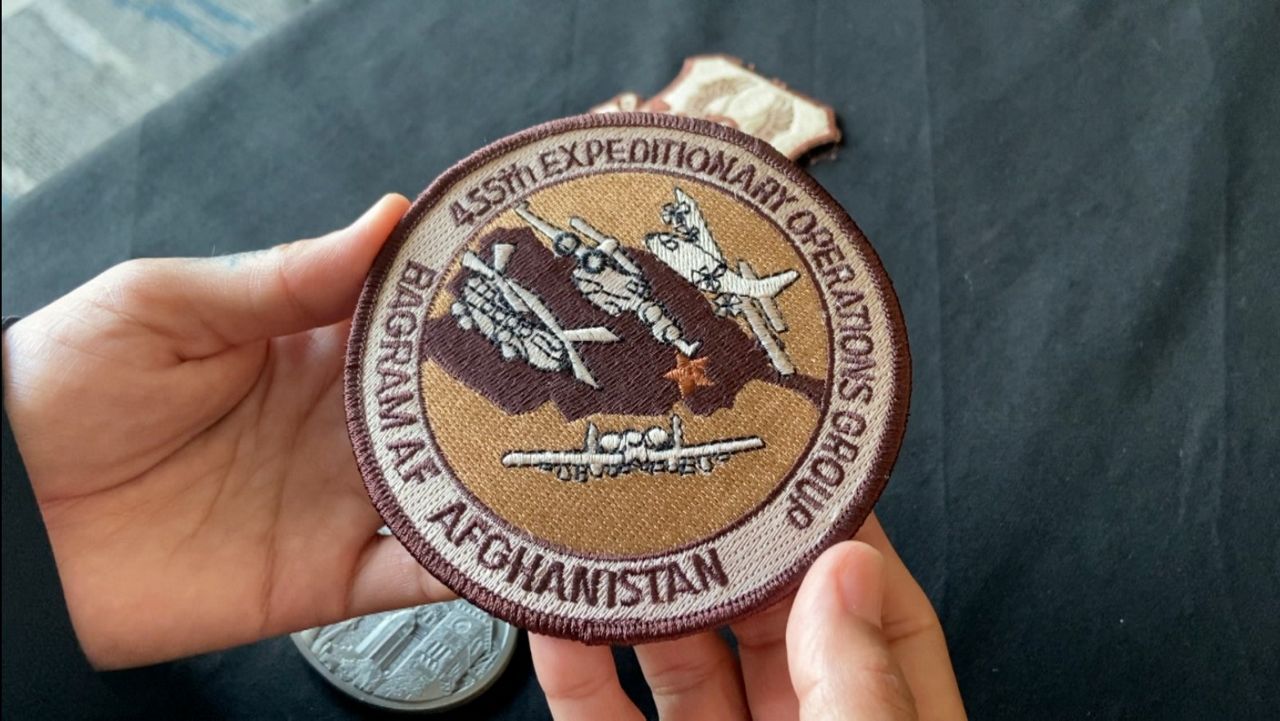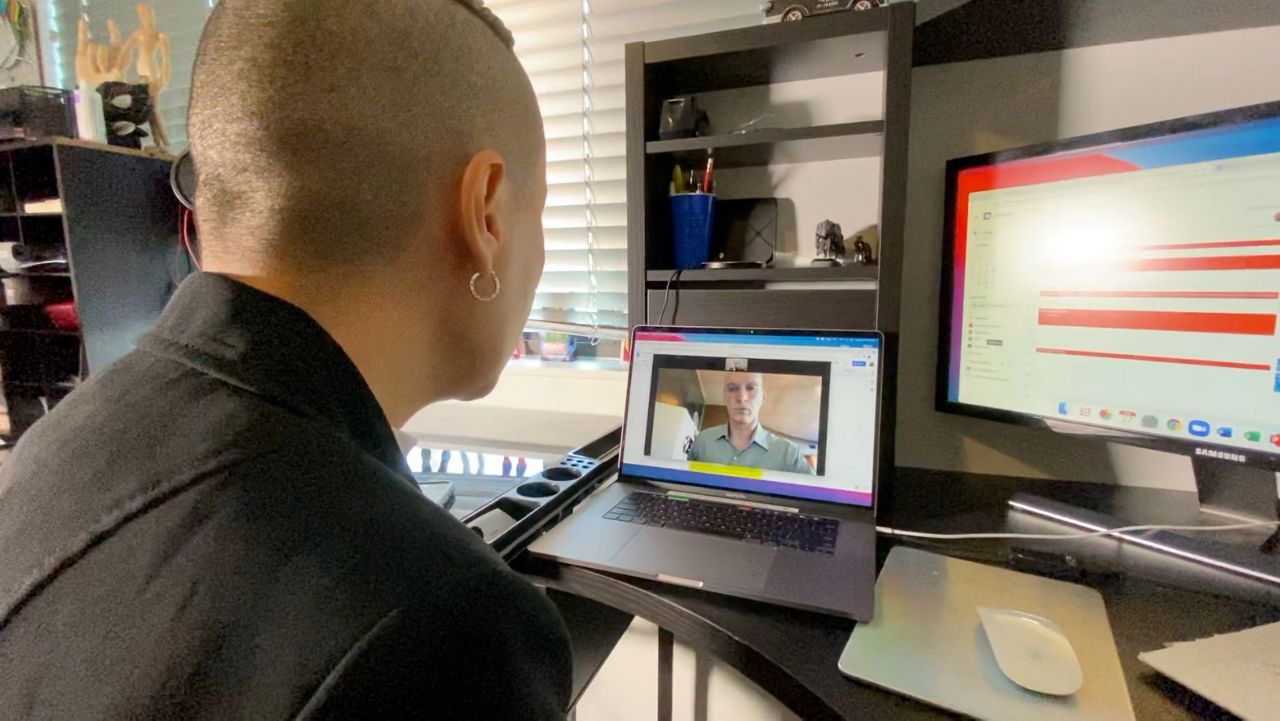TEXAS — Despite the veteran unemployment rate climbing by nearly 30% at the peak of the pandemic, the number was still drastically lower than the civilian unemployment rate in Texas and across the country. It’s an extremely different picture compared to just a decade ago.
“When I enlisted in ’98, you were an airman basic, and you were called an airman in basic training,” recalled MSgt. Priscilla Sanchez.
Today, those in basic training are referred to as trainees until the day they graduate. A lot has changed since Sanchez first started out in the Air Force. Her 23-year military career has taken her all over the world.
“In 2005, I deployed with the 455th Expeditionary Operations Group to Bagram, Afghanistan,” said Sanchez, holding a patch earned during her mission.

Last year, Sanchez was stationed at Ft. Sam Houston in San Antonio. Having family with health needs and faced with the likelihood of another deployment, since Sanchez finally qualified for pension, she decided it was time to retire from the Air Force. But at age 41, her retirement from the service doesn’t mean she’s retiring altogether.
“I can’t live off my retirement alone without working. I can, but it would have to be in a third-world country,” chuckled Sanchez. “I’d have to give up a lot my needs that I have now, a lot of the stuff I’m comfortable with.”
So that meant making the transition into the civilian workforce.
“It’s a difficult transition for some people,” commented Sanchez. “For me and my personal case, I didn’t find it as difficult, only because I was very proactive and I started applying for jobs six months out after I decided that I was going to retire.”
Sanchez’s planner attitude, combined with participating in the military’s Transition Assistance Program, or TAPS, helped make the process go much more smoothly.
About two months ago, Sanchez landed a job as the chief of staff for the CEO of Maxwell Biosciences, an up and coming Austin-based biotech company. It certainly helped that her new boss was an Air Force veteran himself, and looked specifically at area Air Force bases to hire his new right hand. He knew the skills military members possess, specifically in the Air Force.
It wasn’t always such a pretty picture for veteran employment. Just a decade ago, the national veteran unemployment rate was nearly 9%. For certain veteran subsets, like Gulf War II era vets, the rate was even higher.
“Specifically the Army, when you look back at 2011, they paid over $600 million or close to it in unemployment costs for soldiers who were exiting the army,” said Bob Gear, director of the Texas Veterans’ Leadership Program with the Texas Workforce Commission.
Gear said a multitude of state and federal resources have been leveraged to help combat veteran unemployment over the last ten years, and it’s helped. Veteran unemployment was down to less than 3% just before the pandemic hit.

But another problem lurks in the background, job retention. Gear said he’s heard reports of veterans jumping between as many as three to even eight different jobs within the first year of civilian work. A 2014 Syracuse University study suggests nearly half of all veterans leave their first civilian jobs within the first year, nearly 80% by year two.
“It takes time sometimes for veterans to figure out what they really want to do for one,” said Gear. “The other part — 'Do they have the education, do they have the certification, do they have licensure for that particular thing? What is their family situation?' There are so many factors that come into play.”
It’s why there’s a continuing push for better veteran hiring practices in the private sector, including better on-boarding and support systems within the business sector.
Sanchez is hoping to balk the turnover trend. She says she’s excited about her new job and looks forward to completing plenty of missions, albeit for a different team.



